
Nabil Kanso is an American painter. Kanso began his career in New York. His works deal with contemporary, historical and literary themes, and are marked by figurative imagery executed with spontaneous and vigorous handling of the paint and often done on large-scale formats. They reflect movement and tension embodying intense colors and symbolic forms addressing social, political, and war issues. The Vietnam War and the Lebanese Civil War have profoundly affected the development and scope of his themes dealing with violence and war. His long-running Split of Life series encompasses an extensive range of enormous paintings depicting scenes of human brutality and suffering.

Lebanon is a mural size painting by Nabil Kanso depicting the Lebanese Civil War in a scene invoking the spirit and character of the people in the midst of horror and violence gripping the country. Amid the scene of chaos and devastation, two central figures reach across toward each other symbolically to represent the appeal for unity in defiance of the forces of division, destruction, and terror.

The Split of Life is a series of over 80 mural size oil paintings by Nabil Kanso. The paintings span a period from 1974 to 1994, and deal with contemporary and historical issues of war and violence.
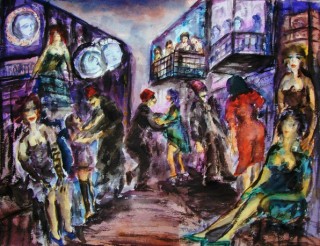
Place des Martyres is the title of a series of over 250 watercolors and drawings executed in New York and Beirut between 1971 and 1974 by Nabil Kanso. The subjects of the works in the series are based on the women headquartered in the red-light district of Beirut city center called el Bourj, and after World War I named Place des Martyrs French for Martyrs’ Place in memory of dozens of Arab nationalists who were hanged in 1915-16 during Ottoman rule.
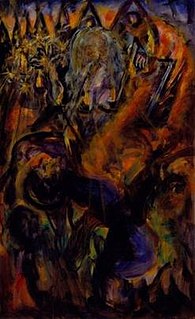
The Apocalypse Series encompasses 125 works consisting of 75 paintings and 50 drawings created between 1982 and 1984 by Nabil Kanso. The subjects of the works in the series are based on the Revelation of Saint John the Evangelist. The colors of this painting are somber, suggesting richness and heaviness, while the repetitive geometry of the shapes suggest apocalyptic inevitability. In Peran Erminy's article, The Apocalyptic Paintings of Nabil Kanso, he clearly states that Kanso's paintings portray our world today. He states that our world is constantly surrounded by violence and people feel vulnerable. The aggression one has can ultimately lead to a break out in war where the world will be doomed. Kanso's paintings reflect the path we are taking as a world. People today are quick to act upon threats leading us into a world that is ruled by war. This will be the hell on earth made by none other than human beings themselves. Kanso has a strong, intense effect on his audience's feelings and emotions. Kanso's work is dark and sometimes frightening, conveying how it is relevant to the scary obstacles of today's world. Our society seems to be stuck on depressing violence and aggression and if continued on this path, will only continue to result in tragic wars.

The Dance of Salomé is the title of a series of 160 works consisting of 85 paintings and 75 drawings created by Nabil Kanso in 1988 and 1995. It is based on biblical and literary works with particular reference to Oscar Wilde’s 1891 play and Richard Strauss’s 1905 opera. The primary subject of all the works in the series is Salomé who is depicted in a sequence of scenes reflecting various nuances of perception in distinctive dance movement.

Hiroshima Nagasaki One-Minute is the subject of two mural-scale paintings made by Nabil Kanso in 1978–79. One is titled 49-Second (Hiroshima) done in oil on canvas measuring 3 X 5.50 meters, the other 11-Seconds (Nagasaki) oil-on-canvas triptych measuring 3 X 4.60 meters center, and 2.75 X 1.32 meters each side.

Living Memory is the title of a series of 9 mural-size paintings on the Holocaust painted by Nabil Kanso in 1980, 1990 and 1993–94.

Time Suspended in Space is the title of a mural-size painting on apartheid in South Africa painted by Nabil Kanso in 1980. It is oil on canvas measuring 3.65 X 5.50 meters.

Dreamvision (paintings) is a series of 28 oil paintings made by Nabil Kanso in 1980–81. The subjects of the works in the series are two figures of a man and woman whose characters and relations are reinforced by figurative allusions to their surroundings.

The Raven is a series of 28 watercolor paintings made by Nabil Kanso in 1995. The subjects of the works in the series are based on the 1845 poem "The Raven" by Edgar Allan Poe.
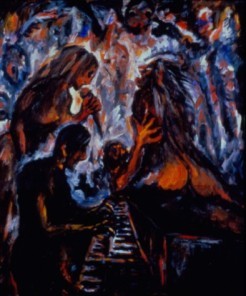
Jazz is a series of 20 paintings made by Nabil Kanso in 1978–79. The subjects of the works are based on the jazz music and the entertainments night life in New York and New Orleans. The paintings are done in oil and acrylic on canvas measuring 224 X 182 cm each. Their compositions reflect predominant red tonality built with broad brushstrokes. Works from the series were exhibited in Atlanta in 1985.
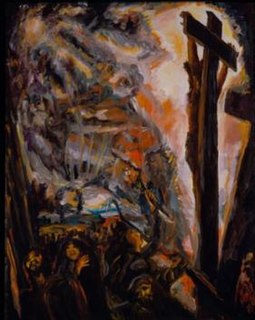
The Crucifixion is the subject of a painting by Nabil Kanso painted in 1983.
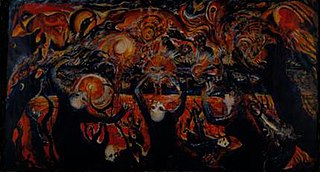
Lebanon Summer 1982 is the title and subject of a mural-scale painting made by Nabil Kanso in 1982 on the Sabra and Shatila massacre during the Lebanese Civil War. It is oil on canvas measuring 3 X 5.5 meters

The Vortices of Wrath is a triptych painted by Nabil Kanso in 1977. It is part of the Lebanon series began in 1975 in response to the Lebanese Civil War. The triptych is done in oil on canvas measuring 3×7.60 meters. The center is 3×3 meters and each side 2.75×2.30 meters.
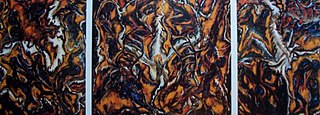
The Floating Shadows is a triptych made by Nabil Kanso in 1986 on the brutality and suffering inflicted during the Lebanese Civil War. The painting is oil on canvas and measures 2.75 x 7.60 meters. It forms part of the Cluster Paintings series that Kanso began in 1986 and marks the transition to a new approach in his compositional framework. The pictorial layout divides the canvas space into various sections reflecting a cluster of interlinked planes depicting floating figures of predominantly dark-blue set against deep orange ground and demarcated by white grayish areas.

The Cluster Paintings are a series of paintings created by Nabil Kanso in 1986–1988. They are characterized by compositions that divide the canvas space into sections reflecting a cluster of irregular shaped planes offering variations of contrasts and viewpoints. These characteristics expanded in later works such as the America and Living Memories series.
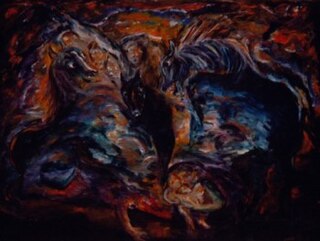
Apocalyptic Rider is a painting created by Nabil Kanso in 1980. It is oil on canvas measuring 7 X 9 feet, and is part of a series depicting horsemen in compositions dealing with apocalyptic themes.
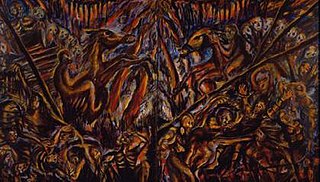
Apocalyptic Riders is a diptych executed in 1984 and is part of a series begun in 1980 by Nabil Kanso.

Endless Night is a painting executed in 1983 by Nabil Kanso in oil paint on canvas measuring 2.25 by 3 metres. It is part of a group of related paintings made by Kanso in response to the Lebanese Civil War. The painting depicts the ravages war in a scene that "embodies recurrent themes of carnage, suffering and the disintegration of humanity."




















